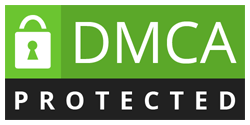Mechanisms by which meiosis would introduce genetic variability in a population
Preparation Task 1:
Describe the mechanisms by which meiosis would introduce genetic variability in a population.  If one diploid yeast cell was heterozygous for an allele with a Dominant mutation on it, what proportion of its offspring could be expected to carry that dominant mutation after mating? (Assume it mates with a cell that is homozygous for the normal, recessive allele.)
Interestingly, yeast switch to sexual reproduction when they are under conditions of stress.
For the purposes of this task, assume yeast populations follow this simplified rule: When yeast are reproducing sexually, they will be found as diploid cells that can go through meiosis (or mitosis), while populations that are producing asexually will include only haploid cells undergoing mitosis. Remember that chromosomes can be counted using karyotypes as seen in your text Figure 9.3.
During Meiosis-I at Prophase-I of pachytene stage crossing over or recombination occurs between two non-sister chromatids of homologous chromosomes resulting in exchange or reshuffling of genes. This process is universal among sexually reproducing organisms and is responsible for all types germinal variations that are passed on from parents to offspring. 50% of offspring would be carrying dominant mutation when the heterozygous is crossed with homozygous recessive. For example, Aa x aa the result will be Aa, Aa, aa, aa 1:1 ratio
Preparation Task 2:
Explain why sexual reproduction could be advantageous to a population under stressful conditions. Relate this to the process of natural selection.
If an organism is under stressful condition sexual reproduction could be advantageous because:
Sexual reproduction increases variation. So, the organism can make various variants. In sexual reproduction we know we get one set of chromosomes from father and one from mother. And there are also crossing over during gamete formation. So sexual reproduction creates many variations.
It makes variants that are different from parental population. So, if the parental population is in stress then the variants created by sexual reproduction could survive the changing environment. Some variation should have advantages upon the changing environment, so they have better chance to survive in nature.
Thus, sexual reproduction also prevents the extinction of that organism.
Preparation Task 3:
Consider the differences between mitosis and meiosis. Examine the figure “A Simplified Model of Yeast Reproduction” above and identify ways in which you could determine whether a yeast cell was going through mitosis or meiosis.
Organisms, including yeast, find a variety of environmental conditions stressful. We can grow yeast in a laboratory under either stressful or non-stressful conditions.
Conditions or chemicals that damage organelles (Chapter 3), interfere with transporting nutrients (Chapter 4), or affect the processes of aerobic or anaerobic respiration (Chapter 6) would ‚Äústress‚ÄĚ these organisms. Environments that affect protein folding (Chapter 2) or enzyme regulation (Chapter 4), are also stressful environments.
Mitosis is an equational division where the chromosomes double up and then divide into two. So, the mother cell divides into 2 daughter cells, each having the equal number of chromosomes as the mother cell. The yeast cell in picture performs asexual reproduction wherein its haploid cell undergoes mitosis producing 2 cells with ploidy N.
When stressful conditions arrive, the yeast cell in the picture undergoes sexual reproduction. The diploid cell with 2N ploidy gives 2 daughter cells with half the number of chromosomes. Hence meiosis is also called as reductional division, as the chromosome number reduces to half.
Preparation Task 4:
Revisit these sections in your textbook if needed and propose at least two specific situations or conditions (that you could control) that yeast may find stressful. Include a citation (your textbook or other sources you may consult)
Preparation Task 4:
Revisit these sections in your textbook if needed, and propose at least two specific situations or conditions (that you could control) that yeast may find stressful. Include a citation (your textbook or other sources you may consult)
Gen Ed Assignment Tasks
Task 5 Define a problem or pose a question:
Define a question you could investigate that links a stressful scenario you identified in Preparation Task 4 to sexual reproduction in yeast.
Task 6 Formulate a hypothesis:
Formulate a hypothesis that could be tested regarding your question. Include your reasoning that led to this hypothesis.
Task 7 Designing an experiment:
Outline an experiment you could use to test this hypothesis. Include and identify the following 6 key elements of your experiment:
1. the experimental versus control group
2. the dependent variable
3. the independent variable
4. the standardized variables
5. adequate replication/sample size
6. materials and methods
Task 8 Drawing Conclusions:
(Defining results that would support or refute your hypothesis.)  Complete both A +B.
A) Describe a possible result from your experiment that would support your hypothesis. You will to describe the results for both the experimental and the control groups to draw a valid conclusion. Provide an explanation for your conclusion. Your explanation should demonstrate the connection between your results and the support of your hypothesis.
B) Describe a possible result from your experiment that would refute your hypothesis. You will to describe the results for both the experimental and the control groups to draw a valid conclusion. Provide an explanation for your conclusion. Your explanation should demonstrate the connection between your results and how they refute your hypothesis.
Task 9 Envision future directions:
Imagine that you have discovered a new species of yeast. Describe how your method, process, or solution could be applicable to this new situation.
"Looking for a Similar Assignment? Get Expert Help at an Amazing Discount!"


